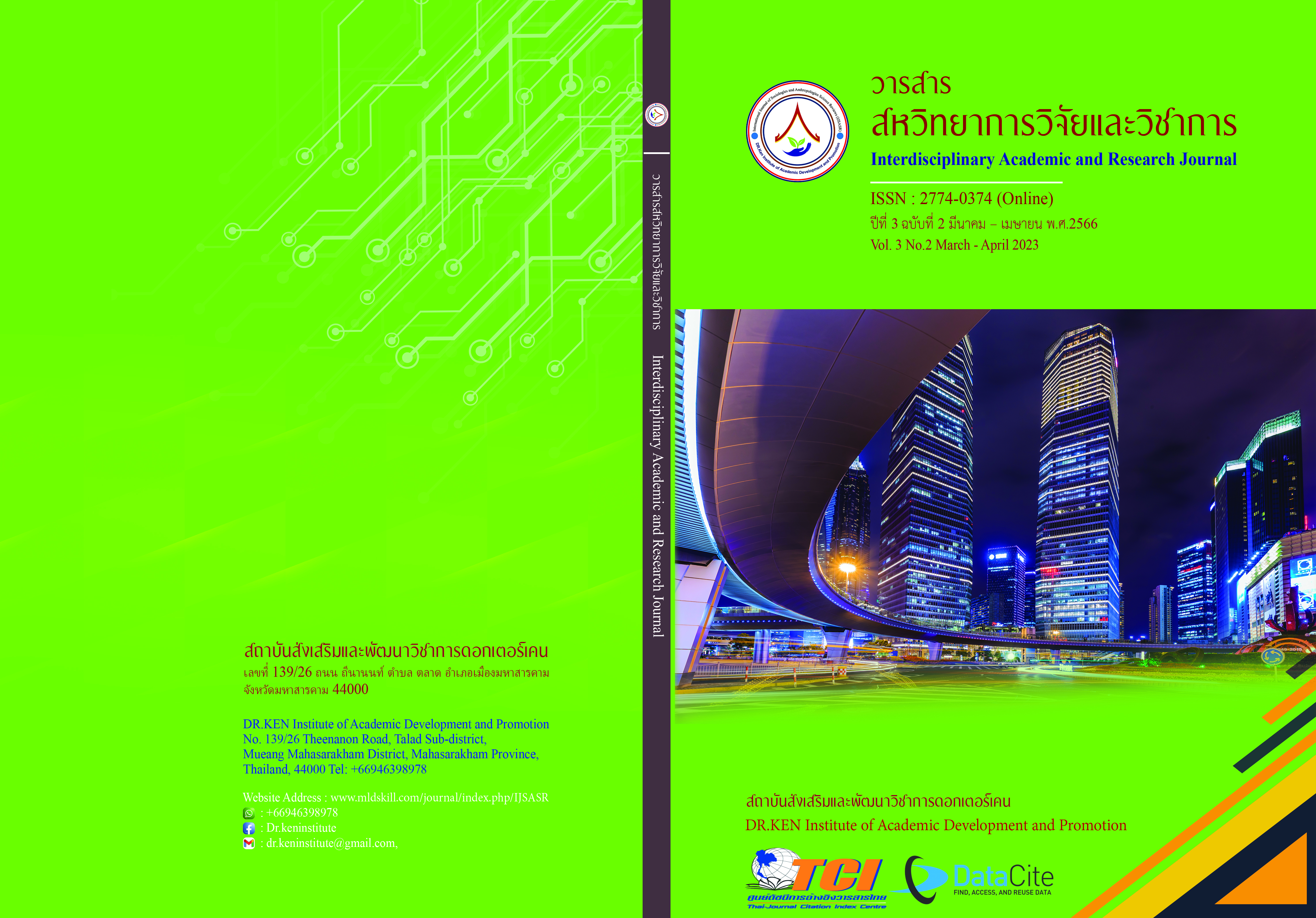A Comparison of Critical Reading Ability of Grade 5 Students between Learning by Using Literature Circles and Normal Learning Method
DOI:
https://doi.org/10.14456/iarj.2023.96Keywords:
Learning Management;, Literature Circles; , Critical Reading Ability;, Grade 5 Students; , Normal Teaching MethodAbstract
The ability to read critically is an important skill for today's students. However, when considering the results of the National Educational Test (O – NET), it was found that the student's scores did not meet the requirements set by the educational institutions. As the result, the researcher realized the problem and used literature circles in class to develop students' critical reading abilities. The purposes of this research were (1) to compare the critical reading ability of Grade 5 students between learning by using literature circles and normal learning methods, and (2) to compare the critical reading ability of grade 5 students before and after literature circles were applied. The samples of this research were 60 Grade 5 students from two classes in Ramkhamhaeng University Demonstration School (Elementary Level) in the second semester, the academic year 2565. By using Cluster Random Sampling, One class was an experimental group and the other one was the control group. There were 2 types of research instruments used in this study. The instrument used for data collection was the critical reading ability test which is a parallel multiple-choice. The instruments used for the experiment were 5 learning lesson plans using the literature circles method, 2 hours each, 5 periods in total, and 5 lesson plans using the normal teaching method, 2 hours each, 5 periods in total. Data were analyzed by Arithmetic Mean, Standard Deviation, and t-test. The findings can be concluded that (1) the critical reading ability of Grade 5 students learning by literature circles method was higher than before learning by literature circles method at a statically significant level of .05. and (2) the critical reading ability of Grade 5 students learning by literature circles method was higher than those who received normal teaching method at a statically significant level of .05
References
นฤมล ตันติชาติ. (2556). การพัฒนาแบบฝึกทักษะการอ่านวรรณกรรมภาษาอังกฤษด้วยวงจรวรรณกรรมเพื่อส่งเสริมความสามารถในการอ่านอย่างมีวิจารณญาณสำหรับนักเรียนชั้นมัธยมศึกษาปีที่ 4 โรงเรียนสาธิต มหาวิทยาลัยศิลปากร. วิทยานิพนธ์ ศษ.ม. การสอนภาษาอังกฤษในฐานะภาษาต่างประเทศ มหาวิทยาลัยศิลปากร.
สถาบันการทดสอบแห่งชาติ. (2564). ประกาศและรายงานผลสอบโอเน็ต. Retrieved on October 4, 2021, from: http://www.newonetresult.niets.or.th/AnnouncementWeb/Login.aspx
Ananda, J. (2022). USING LITERATURE CIRCLES STRATEGY IN TEACHING READING COMPREHENSION. Journal of English Language Learning (JELL), 2 (1), 7- 15.
Daniels, H. (2002). Literature circles: Voice and choice in book clubs and reading groups. 2nd edition. Portland, ME: Stenhouse.
Levy, R. J. (2011). Literature circles go to college. Journal of Basic Writing (CUNY), 30(2),53-83.
Huljanah, M. (2022). The Effect of Using Literature Circle Strategy on Student’s English Reading Comprehension. Diploma thesis, UIN Fatmawati Sukarno Bengkulu.
Saskatoon Public School. (2012). What are Literature Circles?. Accessed on October 30, 2021. Retrieved from: http://olc.spsd.sk.ca/de/pd/instr/strats/literaturecircles/index.htm
Downloads
Published
How to Cite
Issue
Section
License
Copyright (c) 2023 ศรัณย์ ขนอม, เด่นดาว ชลวิทย์

This work is licensed under a Creative Commons Attribution-NonCommercial-NoDerivatives 4.0 International License.
Copyright on any article in the Interdisciplinary Academic and Research Journal is retained by the author(s) under the under the Creative Commons Attribution-NonCommercial-NoDerivatives 4.0 International License. Permission to use text, content, images, etc. of publication. Any user to read, download, copy, distribute, print, search, or link to the full texts of articles, crawl them for indexing, pass them as data to software, or use them for any other lawful purpose. But do not use it for commercial use or with the intent to benefit any business.
















.png)


